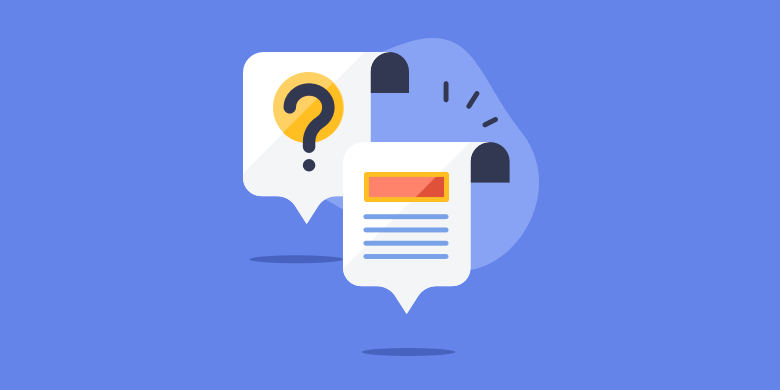The idea behind informational documentation is to provide users with resources that solve problems or answer questions. Developing good help documents is an important part of achieving this goal, but there is a good chance that you could get more when writing this content. In this post, you will learn a few tips for getting the most from your help documents.
Understand the Reader
If you want to develop useful help content, you have to put yourself in the shoes of the reader. Ask yourself the reason for which a reader might want to visit the help page. What are they trying to achieve? What type of content would be most useful for a person that is visiting this page?
First and foremost, consider where people are most likely to want to access help documents. 73% of people prefer to access self-service information from a company’s website, versus their social media, over SMS, or using live support. As a result, consider creating a self-service help page that lives within your website domain. Make sure it is visible and clearly accessible from the navigation menu.
You have a few options when it comes to focusing your content writing on creating a help page on your website. Picking the right format can make a significant difference in how helpful the content will be. As an example, if the reader needs an answer to a question, you would build an FAQ page for the topic. If the reader needs to understand how to work through a specific process, creating a step-by-step walkthrough would be the best solution.
Update and Improve Help Content
Your help content isn’t always going to hit the mark on the first try. In addition to that, the usefulness of some help documents can diminish with time. If these resources are going to serve their purpose, it is important to make a continued effort to update and improve your help documents.
It’s important to consider how people interact with written content on your site. Most people will scan text in a Z-pattern. Therefore, when planning your help documents, keep formatting in mind as you prioritize information on the page. When content writing is done in a way that is to the point, easily scanned by the reader, and provides value, it results in more satisfied customers.
Share Your Help Content
Self-service help documents can be integrated in with other types of content. This can make it more accessible to users. When publishing blogs or sending out an email newsletter, you can find ways to link from the content to your help resources. Along with that, seek out ways to post about your help documents on social media.
As an example, you might have a blog or email newsletter that is about the benefits of using a new feature to your service. If you have created something like a walkthrough for using that feature, it will be helpful if the reader can find a link to the walkthrough directly within the content.
Optimize for Search
Help documents are supposed to be a convenience for your customers or clients. If they have a hard time finding the resources they need, it defeats the purpose of the content you’ve written.
The answer to this is to optimize your self-service help documents for search engines. Consider the search terms that might be used when a customer is trying to find the answer to a specific question or when they are trying to troubleshoot a problem. Use those keywords to optimize the page for search.
More customers will be able to find your help pages more quickly when they search for answers on Google, and that will make it the resources more convenient. With 73% of customers stating that they value time the most when it comes to their customer service, an easily searchable help page will benefit customer retention and satisfaction.
Use a tool like GTmetrix to find ways to further optimize your help documents. Additionally, implement basic SEO best practice into your content writing for improved visibility on search engines. Simply adding the proper headings, alt tags, and improving page speed can benefit your help page’s visibility on the web.
Aim for Consistency
Help content needs to be consistent. You want to set a tone and develop a voice that is on brand and the same throughout all of your help resources. Along with that, self-service help pages should be similar in style and form. When a person goes from one help document to another, they should get the impression that it was written by the same person.
If you want to ensure consistency across all of your help documents, consider making a content writing guide. Cover things like the correct tone for different types of help resources. You could also provide information about the formatting and layout for different types of help content.
Self-service help documents are essential for companies in a time when their popularity only continues to increase. An effective help page benefits lead generation, retention, and overall customer satisfaction. At NeverBounce, extensive self-service help documentation is available to assist with installing and using our email verification software. Additionally, NeverBounce complements self-service help documents with live support to ensure customer success. Consider this strategy and the above tips as you write your help resources in order to best assist your customers.







